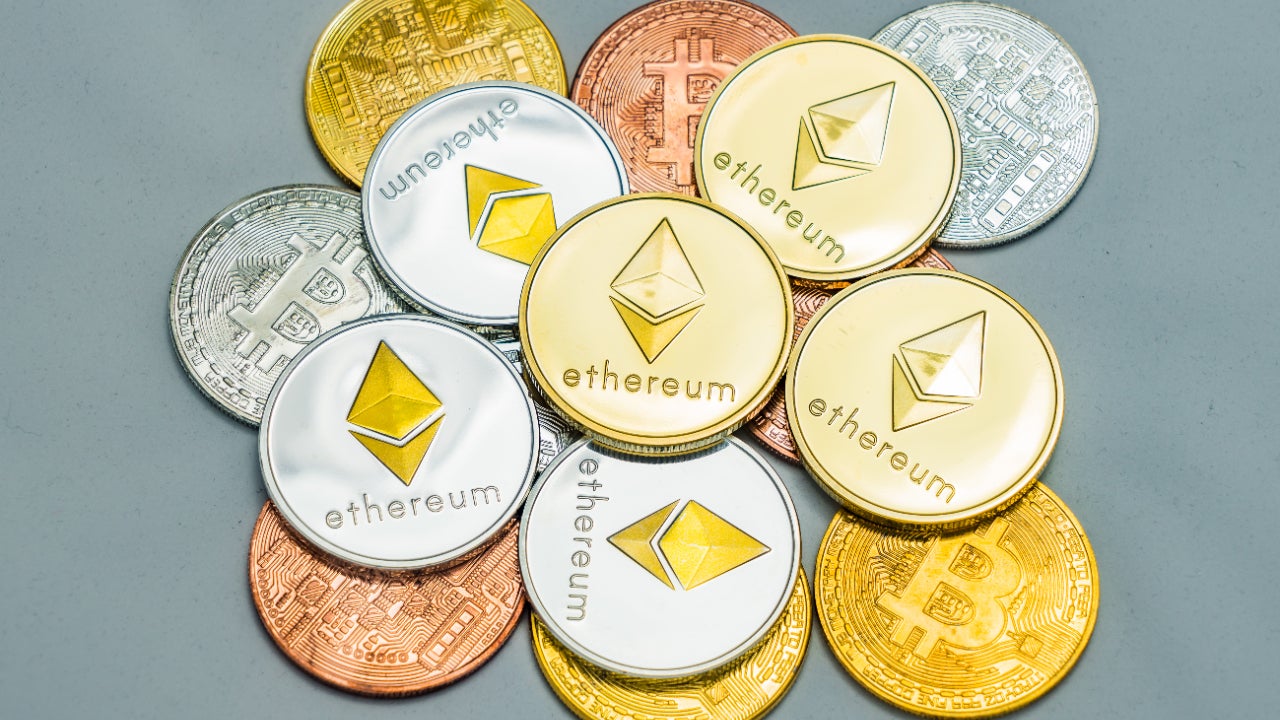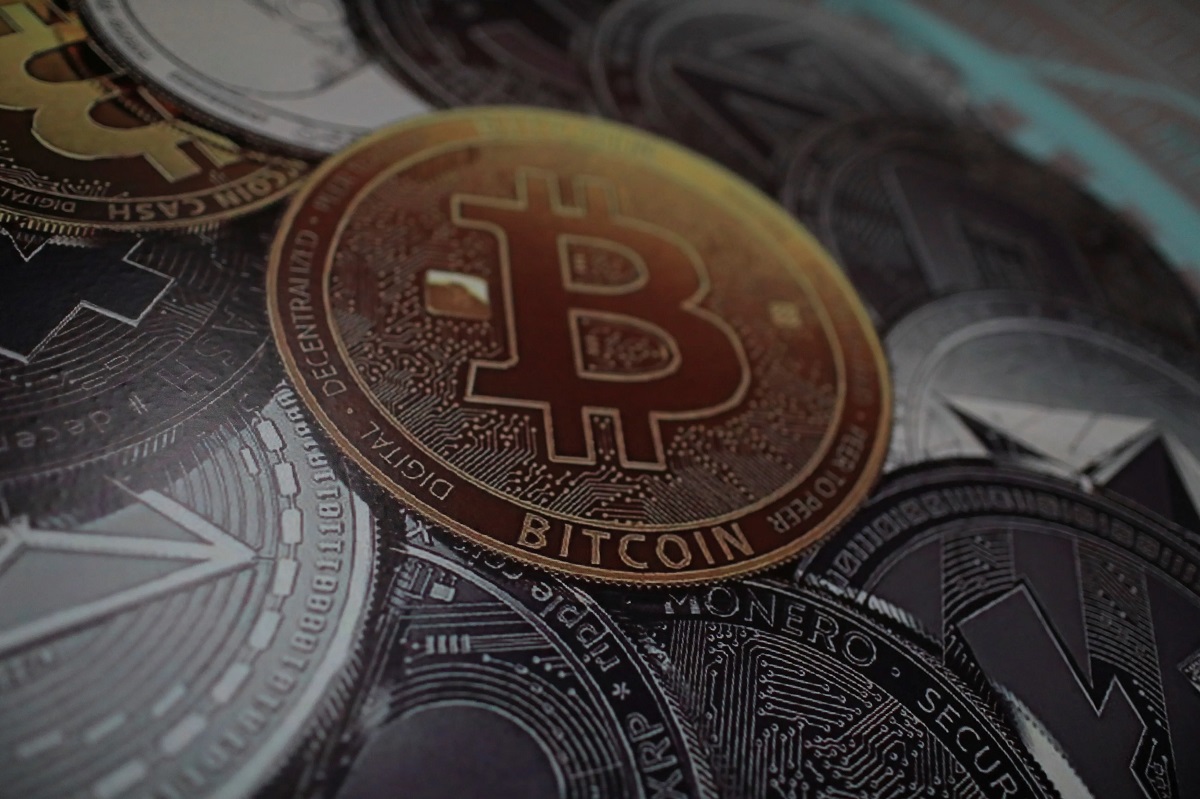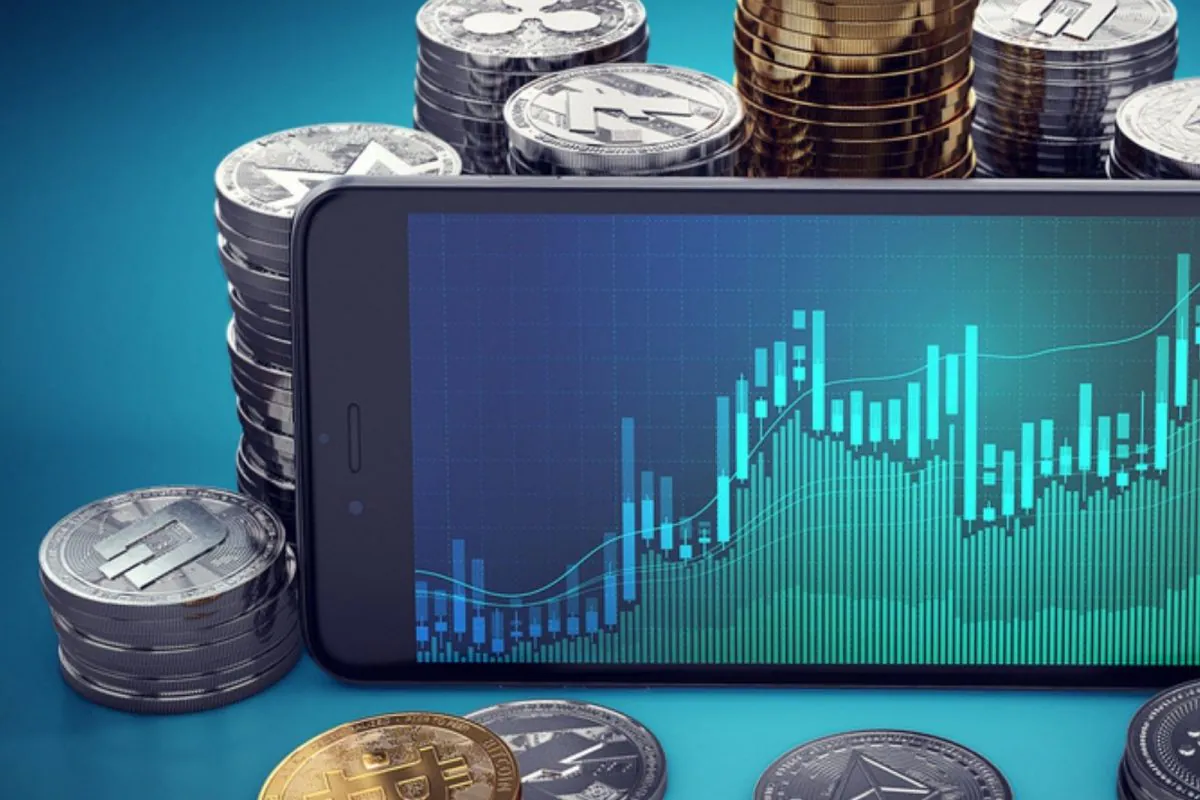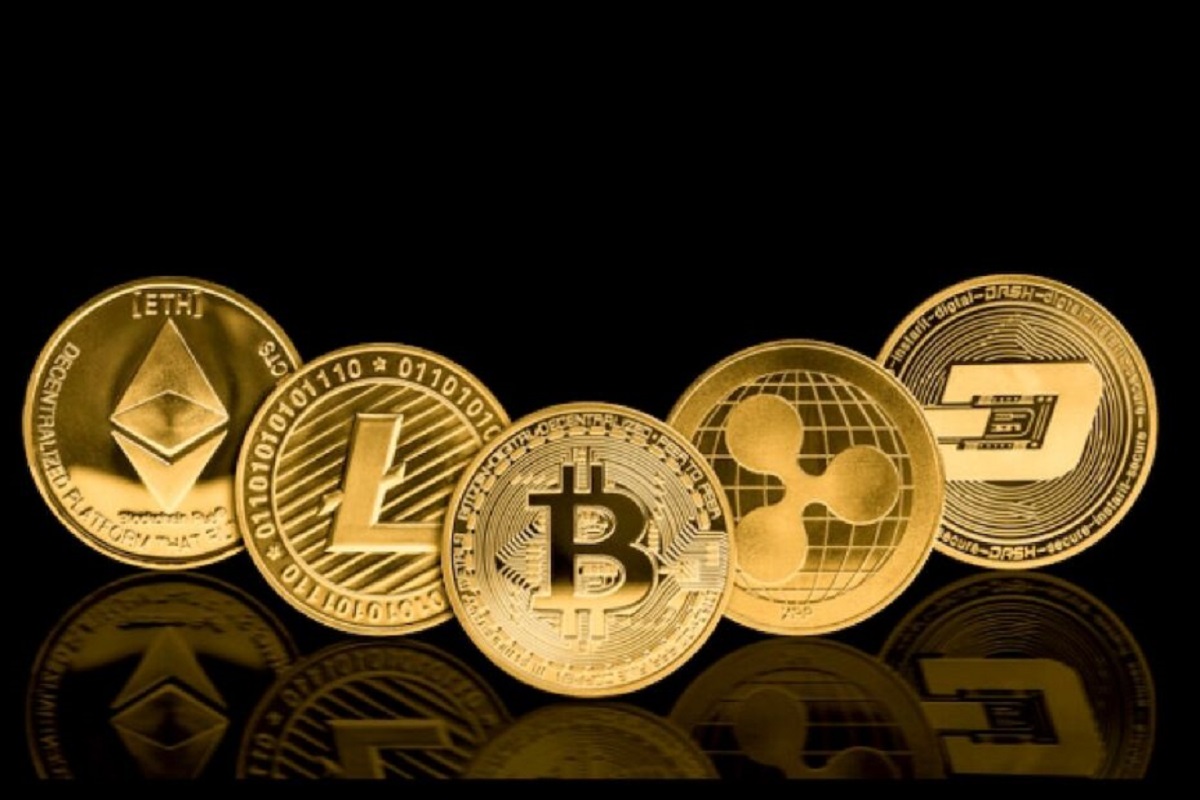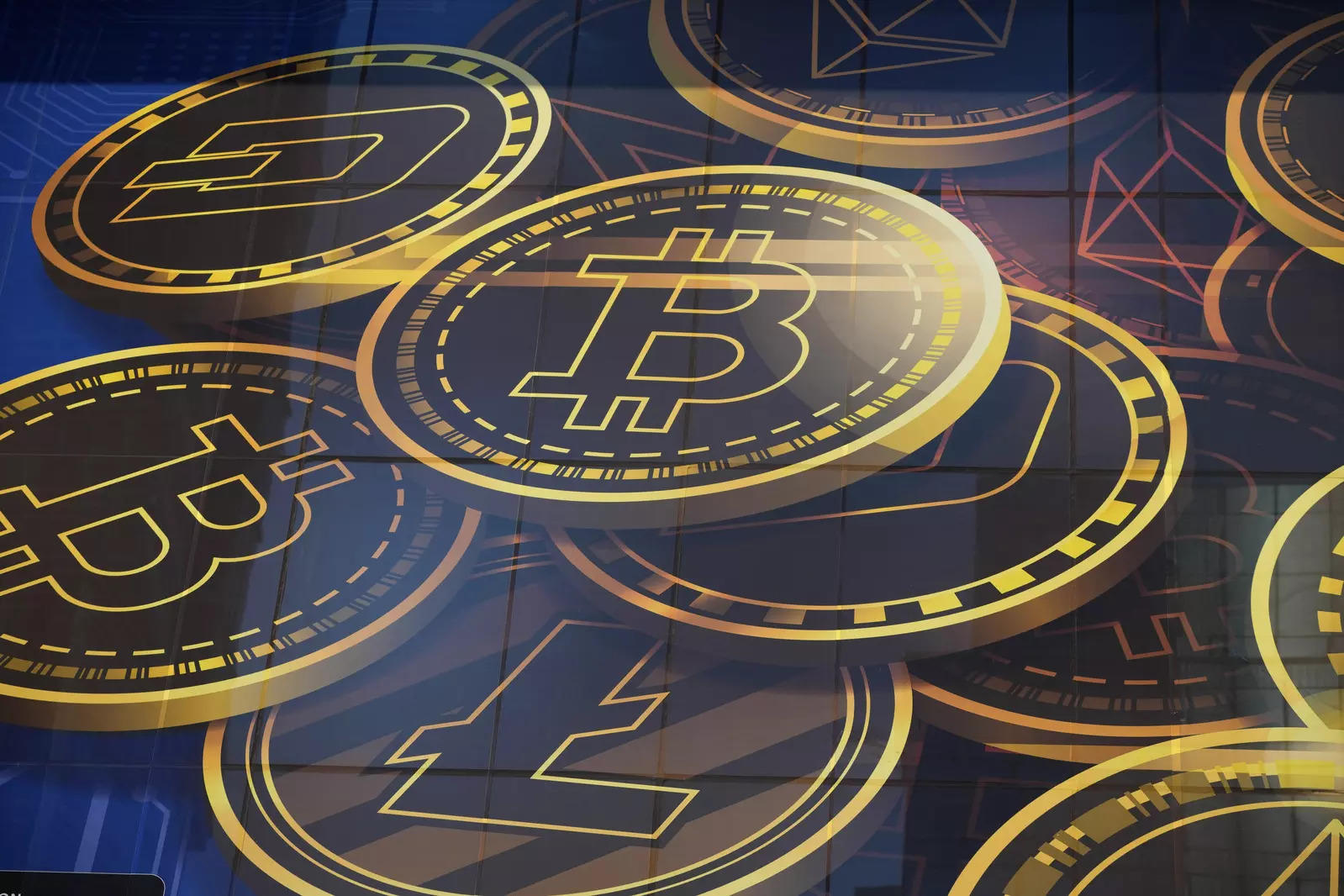Introduction
Welcome to the world of digital currency, where innovation and technology have revolutionized the way we think about money. In today’s digital age, digital currencies have gained significant popularity and have become a hot topic in the financial world. Whether you’re a tech enthusiast, a savvy investor, or simply curious about the potential of these virtual currencies, you’ve come to the right place.
Digital currency, often referred to as cryptocurrency, is a form of digital or virtual money that utilizes cryptography for security. Unlike traditional physical currencies such as cash or coins, digital currencies exist only in electronic form and rely on decentralized networks called blockchain for transactions and record-keeping.
What sets digital currency apart from traditional fiat currencies is its decentralized nature, meaning it is not controlled by any central authority like a government or financial institution. Instead, digital currencies operate on a peer-to-peer network, allowing for secure and direct transactions between users without the need for intermediaries.
The rise of digital currencies can be attributed to numerous factors. One of the driving forces behind their popularity is their potential to offer increased privacy and security. Transactions made with digital currencies are encrypted, making them highly secure and difficult to forge. Additionally, digital currencies provide a level of transparency through the use of blockchain technology, allowing users to verify transactions in real-time.
Another key advantage of digital currency is its potential for rapid and low-cost transactions. Traditional banking systems often involve lengthy verification processes and high transaction fees. In contrast, digital currencies enable quick and efficient transfers, cutting down on processing times and reducing transaction costs.
Furthermore, the decentralized nature of digital currencies allows for financial inclusivity, enabling individuals without access to traditional banking systems to participate in the global economy. This can greatly benefit individuals in developing countries who may not have access to banking services but possess a mobile phone or internet connection.
In this guide, we will delve deeper into the world of digital currency and explore various ways in which you can make money with these innovative assets. Whether you’re interested in investing, mining, or accepting digital currency as payment, we’ve got you covered. So, let’s embark on this exciting journey and unlock the potential of digital currency!
What is Digital Currency?
Digital currency, also known as cryptocurrency, is a form of virtual or digital money that operates on a decentralized network called blockchain. Unlike traditional fiat currencies issued by governments, digital currencies are not physical in nature and exist solely in electronic form.
These virtual currencies utilize cryptographic technology to secure transactions and control the creation of new units. Cryptography ensures the integrity and security of digital currency transactions, making them highly resistant to fraud and counterfeiting.
One of the most well-known digital currencies is Bitcoin, which was introduced in 2009 as the first decentralized cryptocurrency. Bitcoin, and many other digital currencies that followed, operate on a peer-to-peer network, allowing users to send and receive funds directly without the need for intermediaries.
The decentralized nature of digital currencies means that no single entity, such as a government or financial institution, controls or regulates them. Instead, transactions and the issuance of new units are managed by a consensus mechanism, typically through mining or proof-of-stake algorithms.
Each digital currency has its own unique features, algorithms, and purposes. While some digital currencies aim to be a store of value and medium of exchange, others serve more specialized functions, such as facilitating smart contracts or providing privacy-enhanced transactions.
Transactions made with digital currencies are recorded and verified on a blockchain, which is a distributed ledger that ensures transparency and immutability. This decentralized ledger eliminates the need for trust between parties as transaction history is open for anyone to view and audit.
The value of digital currencies is determined by the market forces of supply and demand. As more individuals and businesses adopt digital currencies and recognize their utility, the demand for these assets may increase, potentially driving up their value. However, it is important to note that digital currencies can be volatile, and their value may fluctuate significantly.
Overall, digital currency represents an exciting and transformative innovation in the financial world. By harnessing the power of cryptography and decentralization, digital currencies offer new possibilities for secure, efficient, and inclusive financial transactions.
Popular Digital Currencies
The world of digital currency is vast and ever-evolving. While there are thousands of digital currencies in existence today, let’s take a look at some of the most popular ones that have gained widespread recognition and popularity:
- Bitcoin (BTC): Bitcoin is the pioneering digital currency that started it all. Introduced in 2009, Bitcoin operates on a decentralized peer-to-peer network and has established itself as the leading digital currency. It is often referred to as “digital gold” due to its potential as a store of value and medium of exchange.
- Ethereum (ETH): Ethereum is not just a digital currency, but also a decentralized platform that enables the creation and execution of smart contracts. It has gained significant attention for its ability to power decentralized applications (DApps) and support the growth of the decentralized finance (DeFi) ecosystem.
- Ripple (XRP): Ripple is both a digital currency and a payment protocol. It aims to facilitate seamless, fast, and cost-effective cross-border transactions. Ripple’s focus on the banking and financial sector sets it apart from other digital currencies.
- Litecoin (LTC): Created in 2011, Litecoin is often considered the silver to Bitcoin’s gold. It offers faster transaction confirmation times and a different hashing algorithm. Litecoin has gained popularity for its ability to process transactions more quickly, making it suitable for day-to-day transactions.
- Bitcoin Cash (BCH): Bitcoin Cash is a fork of Bitcoin that emerged in 2017. It aims to address scalability issues by increasing the block size, allowing for more transactions to be processed at a faster rate. Bitcoin Cash strives to be a peer-to-peer electronic cash system.
These are just a few examples of popular digital currencies, but there are many more out there, each with its own unique features and use cases. It’s important to conduct thorough research and understand the fundamentals of any digital currency before deciding to invest or engage in transactions.
Additionally, it’s worth noting that the digital currency ecosystem continues to evolve, with new projects and innovative solutions emerging regularly. It is an exciting space to explore, but it’s also vital to exercise caution and consider factors such as market volatility, regulatory developments, and security measures when dealing with digital currencies.
Remember, the popularity and success of a digital currency can change over time, so staying informed and up to date with the latest developments in the industry is key to making informed decisions.
Getting Started with Digital Currency
Interested in diving into the world of digital currency? Here are some steps to help you get started:
- Educate Yourself: Before making any investments or transactions, it’s crucial to educate yourself about digital currency. Learn about how it works, the different types of digital currency available, and the risks and benefits associated with this emerging asset class. There are plenty of online resources, forums, and tutorials that can help you gain a solid understanding.
- Choose a Digital Wallet: A digital wallet is essential for storing, sending, and receiving digital currency. There are various types of wallets available, including software wallets that can be installed on your computer or mobile device, hardware wallets that offer an added layer of security by storing your digital currency offline, and online wallets that are accessible through the internet. Research different wallet options and choose one that aligns with your security preferences and needs.
- Select a Digital Currency Exchange: To buy or trade digital currency, you’ll need to sign up for a digital currency exchange platform. Look for exchanges that are reputable, have a user-friendly interface, and support the digital currencies you’re interested in. Some popular exchanges include Coinbase, Binance, and Kraken. It’s important to note that each exchange may have specific requirements for creating an account, such as identity verification.
- Complete the Verification Process: Depending on the exchange you choose, you may need to complete a verification process to comply with Know Your Customer (KYC) regulations. This process usually entails providing personal identification documents, such as a passport or driver’s license, and proof of address. Once your account is verified, you’ll be able to deposit funds into your exchange account.
- Start with Small Investments: As a beginner, it’s advisable to start with small investments until you become more comfortable and confident in navigating the digital currency market. Diversify your portfolio by considering different digital currencies and allocation strategies. Remember, investing in digital currency involves risks, and it’s essential to only invest what you can afford to lose.
- Stay Informed and Secure: Stay updated on the latest news and developments in the digital currency space. Follow reputable sources, join online communities, and participate in discussions to expand your knowledge. Additionally, prioritize the security of your digital currency holdings by enabling two-factor authentication, using strong and unique passwords, and being cautious of phishing attempts and suspicious links.
Getting started with digital currency can be an exciting and rewarding journey. However, it’s important to approach it with caution and make informed decisions. Take the time to learn, research, and understand the risks involved. By staying informed and adopting best practices for security, you’ll be better positioned to navigate the world of digital currency and potentially benefit from its innovative capabilities.
Investing in Digital Currency
Investing in digital currency can be a lucrative opportunity for those who are willing to take on the associated risks. Here are some key points to consider when venturing into the world of digital currency investments:
- Research and Due Diligence: Before investing in any digital currency, conduct thorough research to understand its underlying technology, use case, market trends, and potential risks. Learn about the team behind the project and examine the digital currency’s whitepaper. Due diligence is crucial to make informed investment decisions.
- Diversify Your Portfolio: Diversification is important in any investment strategy, and the same principle applies to digital currency investments. Allocate your investment across different digital currencies to minimize risk. Additionally, consider diversifying across other asset classes to mitigate potential losses in the volatile digital currency market.
- Stay Updated on Market Trends: Keeping up with the latest market trends and news is essential for making informed investment decisions. Stay informed about regulatory developments, technological advancements, and shifts in investor sentiment that can impact the digital currency market.
- Manage Risk: Digital currencies are known for their volatility, and investments can fluctuate dramatically in value. Set a personal risk tolerance level and establish stop-loss orders to limit potential losses. Don’t invest more than you can afford to lose, and consider consulting with a financial advisor to evaluate your investment strategy.
- Timing and Patience: Timing plays a crucial role in digital currency investments. Avoid chasing the market and practice patience. Instead of trying to time the market perfectly, consider a long-term investment approach and ride out the market fluctuations.
- Consider Dollar-Cost Averaging: Dollar-cost averaging involves investing a fixed amount of money at regular intervals, regardless of the current price of the digital currency. This strategy allows you to buy more when prices are low and fewer when prices are high, potentially reducing the impact of short-term market volatility.
- Secure Your Investments: Protect your digital currency investments by utilizing secure wallets, enabling two-factor authentication, and implementing strong password practices. Be cautious of phishing attempts and avoid sharing sensitive information online.
It’s important to note that investing in digital currency carries inherent risks. Market volatility, regulatory changes, technological vulnerabilities, and other unforeseen factors can impact the value of digital currencies. Only invest what you can afford to lose, and consider seeking professional advice to assess your individual financial situation and investment goals.
By conducting thorough research, diversifying your portfolio, managing risk, and staying informed, you can make strategic decisions when investing in digital currency. With the right approach and a long-term perspective, digital currency investments have the potential to generate favorable returns in an ever-evolving financial landscape.
Day Trading Strategies for Digital Currency
Day trading is a popular strategy in the world of digital currency, where traders aim to take advantage of short-term price fluctuations. If you’re interested in day trading digital currencies, here are some strategies to consider:
- Technical Analysis: Utilize technical analysis tools and indicators to identify patterns, trends, and potential entry and exit points. Technical analysis involves studying historical price data and volume to make predictions about future price movements.
- Set Clear Entry and Exit Points: Establish clear entry and exit points for each trade to minimize the impact of emotions and prevent impulsive decision-making. Whether you’re setting stop-loss orders to limit potential losses or setting profit targets to secure gains, having predefined entry and exit points is crucial.
- Practice Risk Management: Day trading can be highly volatile, so it’s vital to implement proper risk management techniques. This includes setting a maximum loss limit per trade, not risking more than a certain percentage of your overall trading capital, and diversifying your trades to spread the risk.
- Stay Informed: Keep up-to-date with the latest news and announcements that can impact the digital currency market. Significant events, regulatory developments, and market sentiment can affect price movements. Utilize reputable news sources, social media platforms, and digital currency forums to stay informed.
- Utilize Stop-Loss Orders: Stop-loss orders are vital risk management tools that automatically sell your digital currency if it reaches a predetermined price level. By using stop-loss orders, you can limit potential losses and protect your trading capital.
- Practice Discipline and Emotional Control: Emotions can be detrimental to successful day trading. Avoid making impulsive decisions based on fear or greed. Stick to your trading plan, follow your predefined strategies, and avoid chasing price movements.
- Consider Technical Indicators: Utilize technical indicators such as moving averages, relative strength index (RSI), and Bollinger Bands to identify potential overbought or oversold conditions and predict possible price reversals.
- Implement Stop-Limit Orders: Stop-limit orders combine the features of stop-loss orders and limit orders. They automatically trigger a limit order when a specified price is reached, allowing you to set a desired buying or selling price.
Day trading digital currency requires practice, patience, and a constant focus on monitoring the market. It’s important to note that day trading comes with risks, and it may not be suitable for everyone. Keep in mind that past performance is not indicative of future results, and losses are possible.
It’s advisable to start with a small trading capital and gradually increase your position size as you gain experience and confidence. Consider utilizing trading simulators or paper trading to practice your strategies without risking real money.
Lastly, remember that successful day trading requires continuous learning and adaptation to changing market conditions. Regularly evaluate and refine your strategies based on your trading experiences.
Mining Digital Currency
Mining is a fundamental process in the world of digital currency, where participants contribute computational power to secure and validate transactions on a blockchain network. If you’re interested in mining digital currency, here are some key points to consider:
- Understanding Proof-of-Work: Most digital currencies, including Bitcoin, operate using a consensus mechanism known as Proof-of-Work (PoW). In PoW, miners compete to solve complex mathematical problems to validate and add new blocks to the blockchain. The miner who solves the problem first is rewarded with newly minted digital currency.
- Choosing the Right Mining Equipment: Depending on the digital currency you plan to mine, you’ll need specialized mining equipment. For example, Bitcoin mining often requires powerful ASIC (Application-Specific Integrated Circuit) machines, while other digital currencies may be mineable using standard CPUs or GPUs.
- Considering Energy Costs: Mining digital currency requires a significant amount of computational power, which translates into energy consumption. It’s important to calculate the electricity costs associated with mining and evaluate profitability accordingly. Factors such as electricity rates, mining equipment efficiency, and cooling costs should be taken into account.
- Joining a Mining Pool: Mining on your own can be challenging due to the increasing difficulty of solving mining puzzles. Joining a mining pool allows you to combine computing power with other miners, increasing the chances of solving blocks and receiving a share of the rewards. Keep in mind that mining pools usually charge a fee for their services.
- Understanding Mining Rewards: Mining rewards vary depending on the digital currency and the block reward structure. In addition to block rewards, miners can also earn transaction fees for including transactions in the blocks they mine. These rewards can fluctuate, so it’s important to stay updated on the specific digital currency’s mining rewards and any potential changes.
- Staying Up-to-Date with Mining Software and Network Updates: Mining software needs to be regularly updated to ensure optimal performance and compatibility with the network. Stay informed about any network updates or changes that may require adjustments to your mining setup or software.
- Evaluating Profitability: Mining profitability depends on various factors, including the digital currency’s price, mining difficulty, electricity costs, and the efficiency of your mining equipment. It’s essential to regularly assess and monitor your mining operation’s profitability to ensure it remains viable.
- Considering Environmental Impact: Mining digital currency often consumes a significant amount of energy, leading to environmental concerns. Some digital currencies and mining operations are exploring more eco-friendly alternatives, such as Proof-of-Stake (PoS) mechanisms or renewable energy-powered mining facilities.
Mining digital currency can be a complex process that requires technical knowledge, investment in mining equipment, and ongoing maintenance. It’s important to thoroughly evaluate the costs, profitability, and environmental impact of mining before getting involved.
Lastly, remember that the mining landscape is continually evolving, with new digital currencies and mining technologies emerging. Stay informed and adapt to changes in the industry to make informed decisions about your mining operations.
Accepting Digital Currency as Payment
As digital currencies continue to gain mainstream acceptance, more businesses are considering accepting them as a form of payment. If you’re thinking about incorporating digital currencies into your payment options, here are some essential points to consider:
- Evaluate Your Business Needs: Determine whether accepting digital currency aligns with your business model and target audience. Consider the advantages, such as attracting tech-savvy customers, expanding your customer base, and potentially reducing transaction fees.
- Choose a Digital Currency Payment Processor: To accept digital currencies, you’ll need to work with a payment processor that supports the specific digital currencies you wish to accept. Popular payment processors in the digital currency space include BitPay, CoinGate, and Coinbase Commerce.
- Integrate Digital Currency Payment Options: Integrate the necessary payment plugins or APIs provided by your chosen payment processor into your website or point-of-sale system. This allows customers to select digital currency as a payment method and facilitates the seamless processing of transactions.
- Display Accepted Digital Currencies: Clearly communicate the digital currencies you accept as payment. Display the logos or symbols of accepted digital currencies on your website, invoices, or point-of-sale system to inform customers of their payment options.
- Consider Exchange Rate Volatility: Digital currencies are known for their price volatility. Decide whether you want to accept digital currency payments directly or use a payment processor that instantly converts digital currencies to your preferred fiat currency to minimize the risk of price fluctuations.
- Educate Your Staff and Customers: Train your staff to familiarize them with digital currency payments and address any questions or concerns they may have. Educate your customers about the benefits of paying with digital currencies and provide resources to help them understand the process.
- Maintain Security Measures: Implement robust security measures to protect your business and your customers’ information. Use secure payment processors, enable two-factor authentication, and regularly update your software and systems to ensure the safety of digital currency transactions.
- Track and Report Digital Currency Transactions: Maintain proper records of digital currency transactions for accounting and tax purposes. Keep track of sales, invoices, and any conversions to fiat currency. Depending on your jurisdiction, you may need to report digital currency transactions to relevant authorities.
- Market Your Acceptance of Digital Currency: Leverage your acceptance of digital currency as a unique selling point for your business. Highlight this payment option on your website, social media, and other marketing materials to attract customers who prefer to pay with digital currencies.
By accepting digital currency as payment, you can expand your customer base and tap into the growing community of digital currency users. However, it’s important to allocate the necessary resources and follow the legal and regulatory requirements associated with accepting digital currency as a form of payment.
Regularly evaluate the benefits and risks of accepting digital currency and stay informed about the evolving landscape to make informed decisions about your payment options.
Earning Digital Currency Through Jobs and Freelancing
Digital currency offers unique opportunities for individuals to earn income through jobs and freelancing. Whether you’re looking to supplement your current income or embark on a full-time career, here are some ways to earn digital currency:
- Freelancing Platforms: Many freelancing platforms now support digital currency payments. Platforms like Bitwage and Cryptogrind allow freelancers to offer their services and receive payments in digital currencies, providing access to a global client base.
- Crypto Jobs Boards: Crypto-specific job boards, such as Crypto Jobs List and AngelList, specialize in connecting employers in the digital currency space with job seekers. These platforms offer various opportunities, including programming, marketing, content creation, and customer support.
- Remote Work Opportunities: With the rise of remote work, many companies in the digital currency industry offer remote job opportunities. Explore job boards, social media groups, and forums dedicated to remote work to find positions that align with your skills and interests.
- Blockchain Development: The demand for blockchain developers is on the rise. If you have coding skills, learning blockchain development languages like Solidity for Ethereum or Chaincode for Hyperledger can open up opportunities to work on blockchain projects and earn digital currency as compensation.
- Content Creation: As the digital currency industry grows, so does the need for informative and engaging content. If you possess strong writing, video editing, or graphic design skills, consider freelancing as a content creator for digital currency-focused blogs, websites, and social media channels.
- Affiliate Marketing: Affiliate marketing is a performance-based marketing strategy where you promote products or services and earn a commission for each sale or referral. Many digital currency exchanges and companies offer affiliate programs, allowing you to earn digital currency by promoting their services.
- Blockchain Consultancy: If you have a deep understanding of blockchain technology and its applications, you can offer consultancy services to businesses and individuals seeking guidance on blockchain integration, tokenization, or decentralized finance (DeFi) projects.
- Creating and Selling Digital Goods: If you have artistic or technical skills, consider creating and selling digital goods related to the digital currency industry. This can include designing digital artwork, developing digital products or services, or creating educational materials.
When exploring job opportunities in the digital currency space, it’s important to research and evaluate potential employers or clients to ensure legitimacy and payment security. Be cautious of potential scams and exercise due diligence before engaging in any freelance work or job offers.
As with any job or freelancing endeavor, building a strong portfolio, networking with industry professionals, and continuously learning and staying updated on the latest trends can help you stand out and increase your earning potential.
Earning digital currency through jobs and freelancing allows you to leverage your skills and interests in a growing industry while embracing the flexibility and potential financial rewards that digital currency offers.
Peer-to-Peer Lending with Digital Currency
Peer-to-peer (P2P) lending allows individuals to lend and borrow funds directly from one another without the need for intermediaries like banks. In the digital currency realm, P2P lending platforms have emerged, offering an alternative to traditional lending and investment opportunities. Here’s what you need to know about peer-to-peer lending with digital currency:
- Decentralized Lending Platforms: Decentralized lending platforms leverage blockchain technology and smart contracts to facilitate peer-to-peer lending. These platforms connect borrowers with lenders directly, eliminating the need for a centralized intermediary.
- Lending and Borrowing Options: P2P lending platforms offer individuals the opportunity to act as lenders, earning interest on their digital currency holdings by lending them to borrowers. Conversely, borrowers can access funds in the form of digital currency loans by providing collateral or meeting specific lending criteria.
- Secure and Transparent Transactions: P2P lending platforms utilize blockchain technology to ensure secure and transparent transactions. The use of smart contracts enables the automation of lending and borrowing processes, ensuring that terms and conditions are executed as agreed upon by both parties.
- Greater Access to Borrowing: P2P lending in the digital currency space provides greater access to borrowing for individuals who may not meet traditional lending criteria or lack access to banking services. This can include individuals in underbanked regions or those who prefer to avoid traditional financial institutions.
- Opportunities for Lenders: Lenders can earn interest on their digital currency holdings by participating in P2P lending. Depending on the platform, lenders may have the flexibility to set their own interest rates and choose the borrowers they want to lend to.
- Risk and Considerations: P2P lending carries risks, and it’s important to evaluate potential borrowers and assess the risks associated with lending funds. Delinquencies and defaults are possible, so diversifying your lending portfolio and conducting due diligence on borrowers can help mitigate risks.
- Volatility and Pricing: Keep in mind that the value of the digital currency used in P2P lending can be volatile. Borrowers should assess the impact of price fluctuations when borrowing in digital currency, while lenders should consider the potential impact on the value of their earnings.
- Regulatory Considerations: P2P lending platforms may have varying levels of regulation depending on the jurisdiction in which they operate. As a participant, it’s important to understand and comply with any applicable regulations to ensure a legally compliant lending or borrowing experience.
- Platform Reputation and Security: Before engaging in P2P lending with a specific platform, conduct thorough research and due diligence. Evaluate the platform’s reputation, security measures, and track record to ensure that your lending or borrowing experience is reliable and trustworthy.
Participating in P2P lending with digital currency can be an alternative investment opportunity that provides potential returns for lenders and access to borrowing for individuals in need of funds. However, due diligence, risk assessment, and compliance with regulations are essential to make informed decisions and mitigate associated risks.
As with any investment or borrowing activity, it’s crucial to carefully evaluate the terms, conditions, and risks before engaging in P2P lending with digital currency. Understand the potential rewards and the potential downsides to make informed choices that align with your financial goals and risk tolerance.
Conclusion
The world of digital currency opens up a plethora of possibilities for individuals seeking to explore new avenues of making money. Whether you’re interested in investing, mining, accepting digital currency as payment, or earning through jobs and freelancing, the opportunities are diverse and evolving.
Digital currency offers advantages such as decentralization, security, and fast transactions. However, it’s important to proceed with caution and conduct thorough research before venturing into any digital currency-related activities. Consider the risks involved, stay informed about market trends, and evaluate the potential benefits and drawbacks of each approach.
Investing in digital currency can provide opportunities for favorable returns, but it requires careful analysis, risk management, and staying informed about market trends. Day trading in digital currency can be exciting and potentially profitable for those who develop solid strategies and maintain discipline. Mining digital currency offers a way to contribute to the network while potentially earning rewards, but it requires technical expertise and diligent consideration of electricity costs.
Accepting digital currency as payment can broaden your customer base and provide an innovative payment option, but it’s important to assess the feasibility and consider the volatility of digital currencies. Earning digital currency through jobs and freelancing takes advantage of the growing demand for digital currency-related services, offering unique opportunities for freelancers and entrepreneurs.
Peer-to-peer lending with digital currency presents a decentralized alternative to traditional lending systems, offering access to borrowing and lending for individuals around the world. However, it’s crucial to assess risks, do thorough due diligence, and understand the regulatory landscape.
As the digital currency landscape continues to evolve, it’s important to stay informed, adapt to changes, and exercise prudence in all digital currency-related activities. Explore the possibilities, seize opportunities, but always prioritize your financial goals, risk tolerance, and security.
Remember, this guide provides an overview of various ways to make money with digital currency, but it’s essential to conduct further research, stay updated with the latest developments, and seek professional advice when necessary. Embrace the exciting and transformative potential of digital currency, but do so with caution, knowledge, and an understanding of the risks involved.







